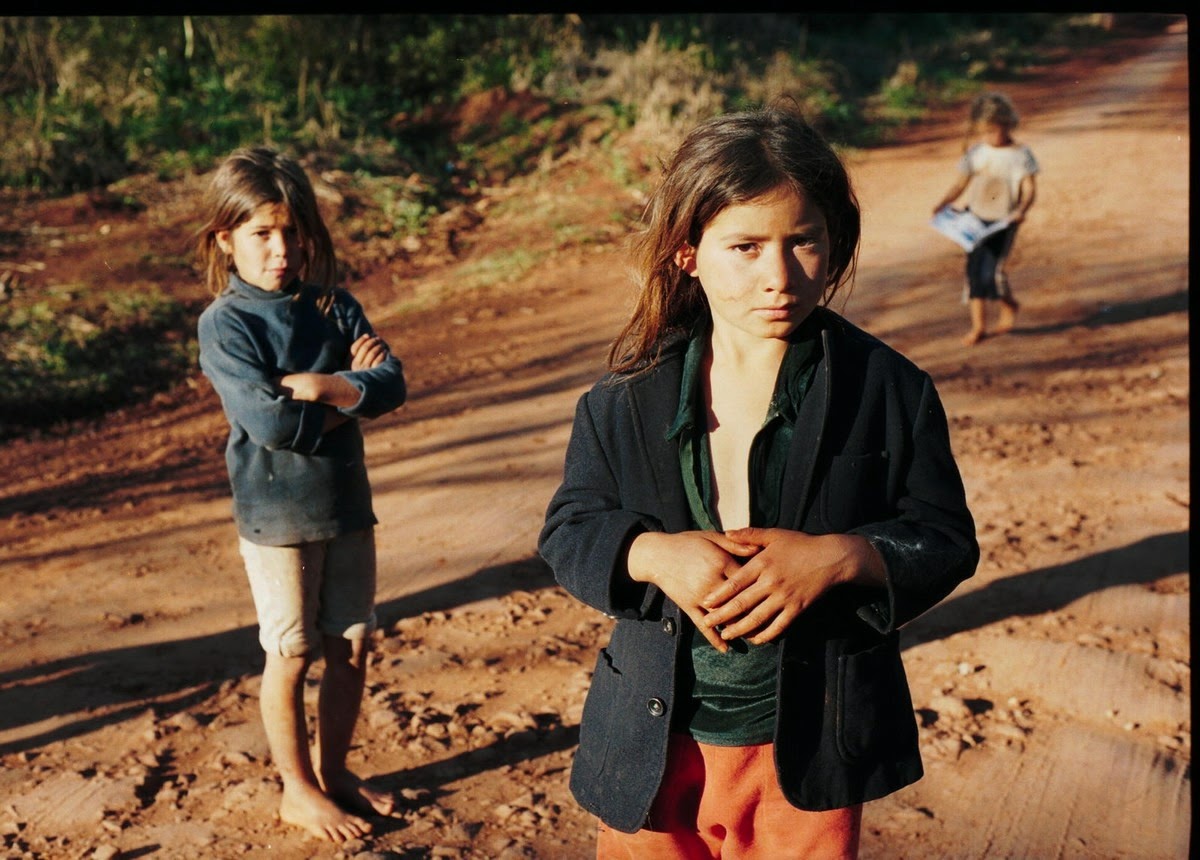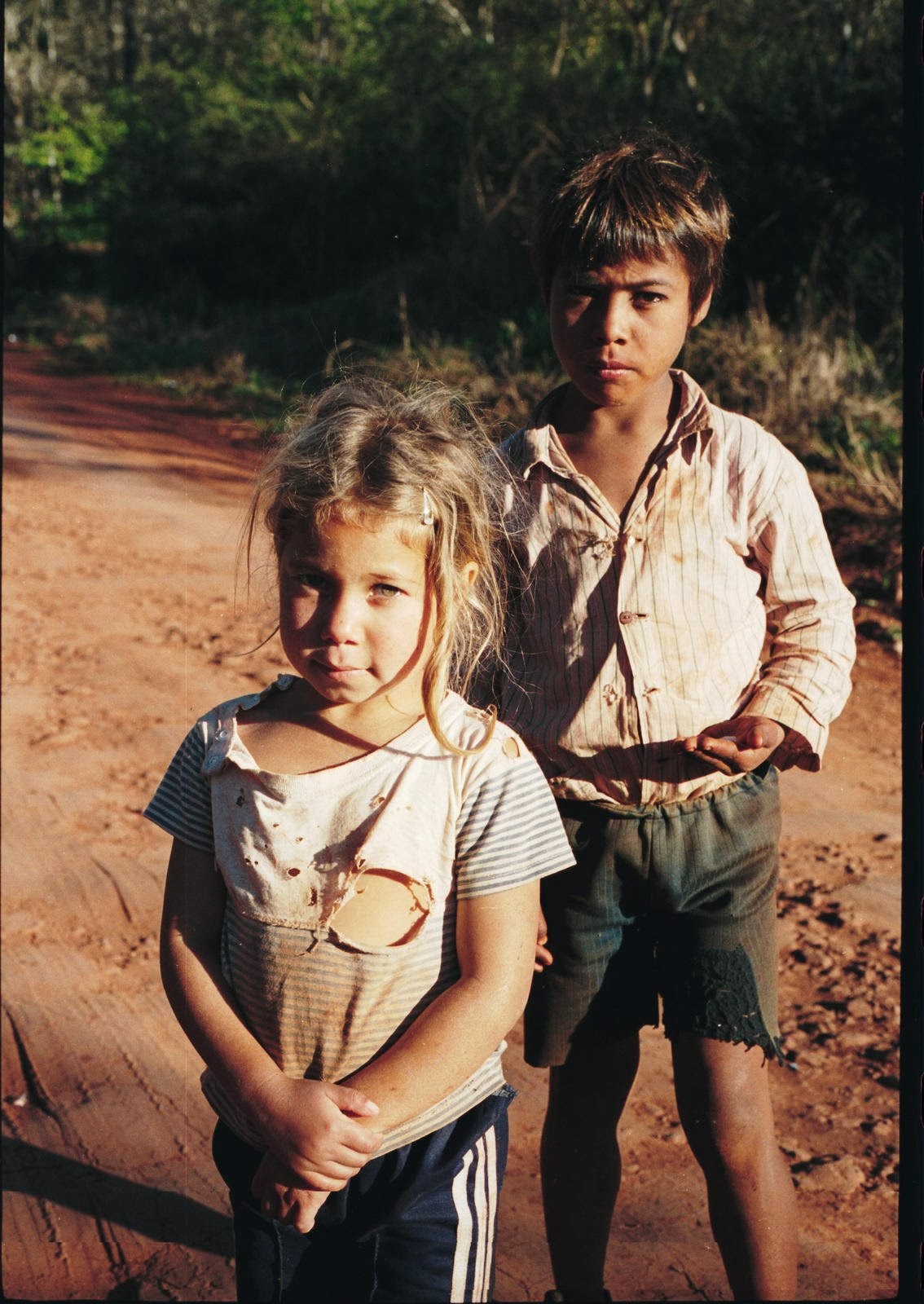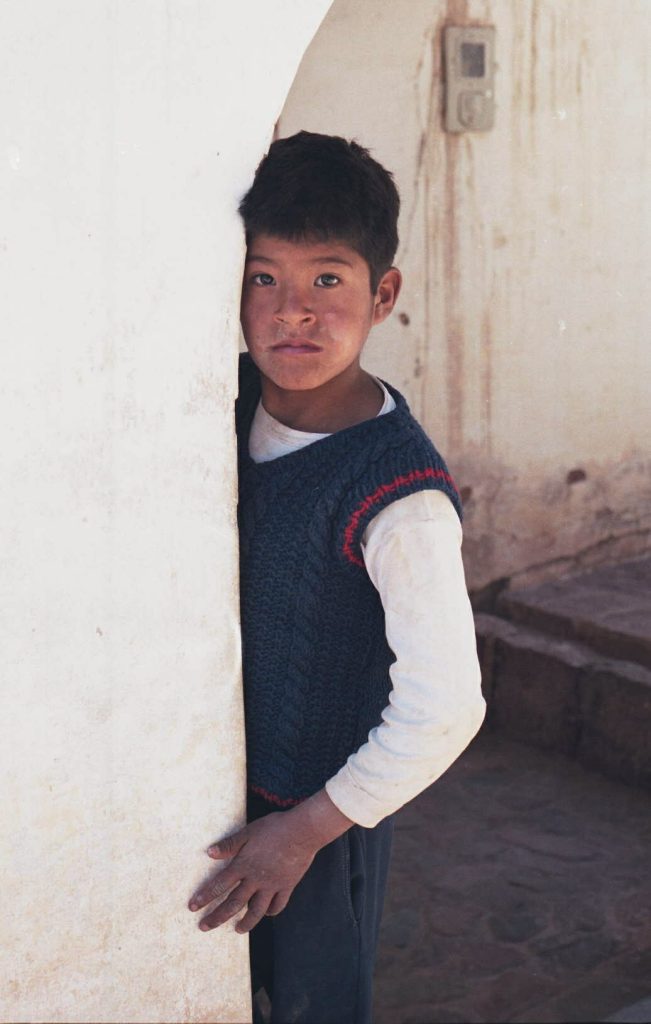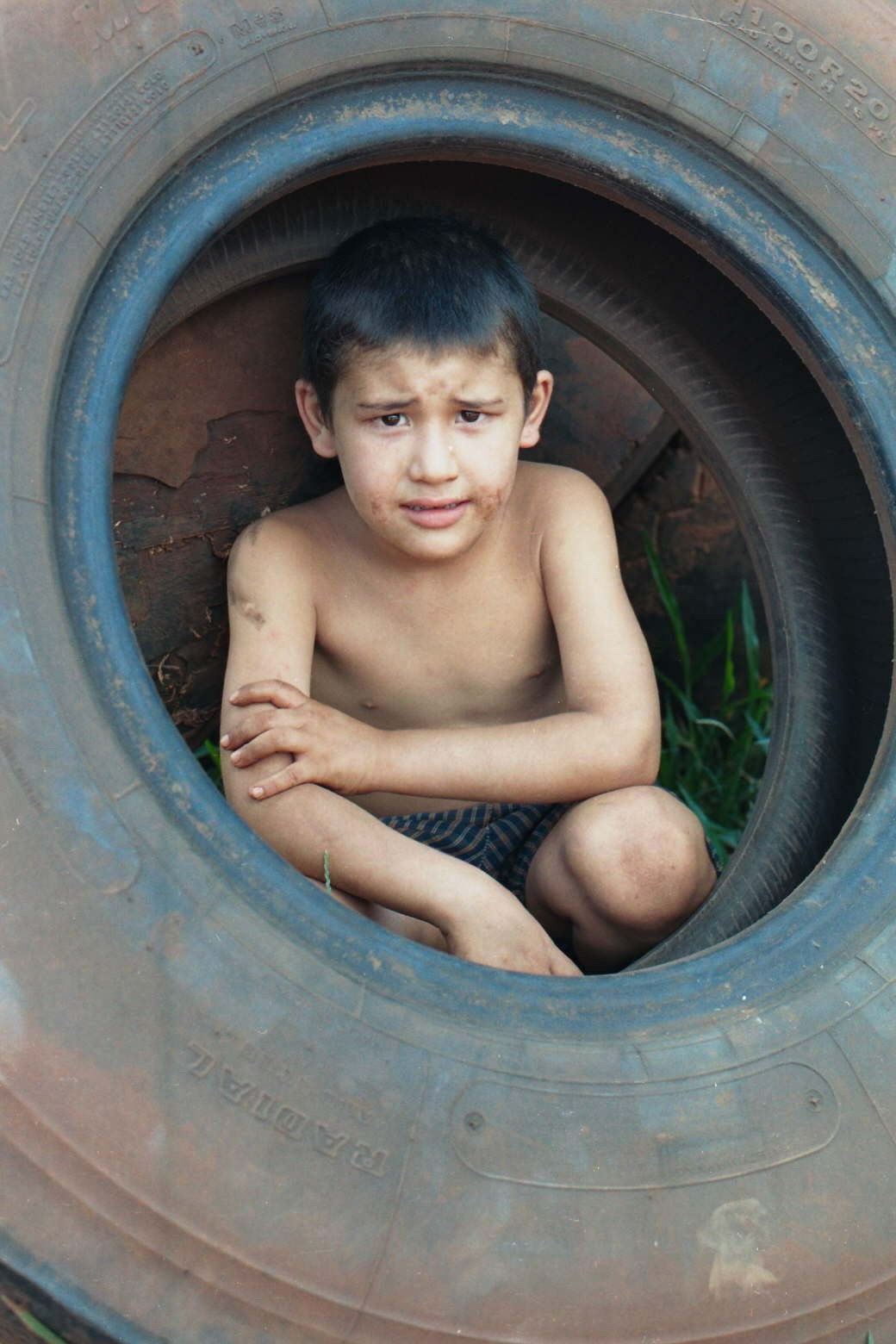Infancia Adulta (Adult Childhood)
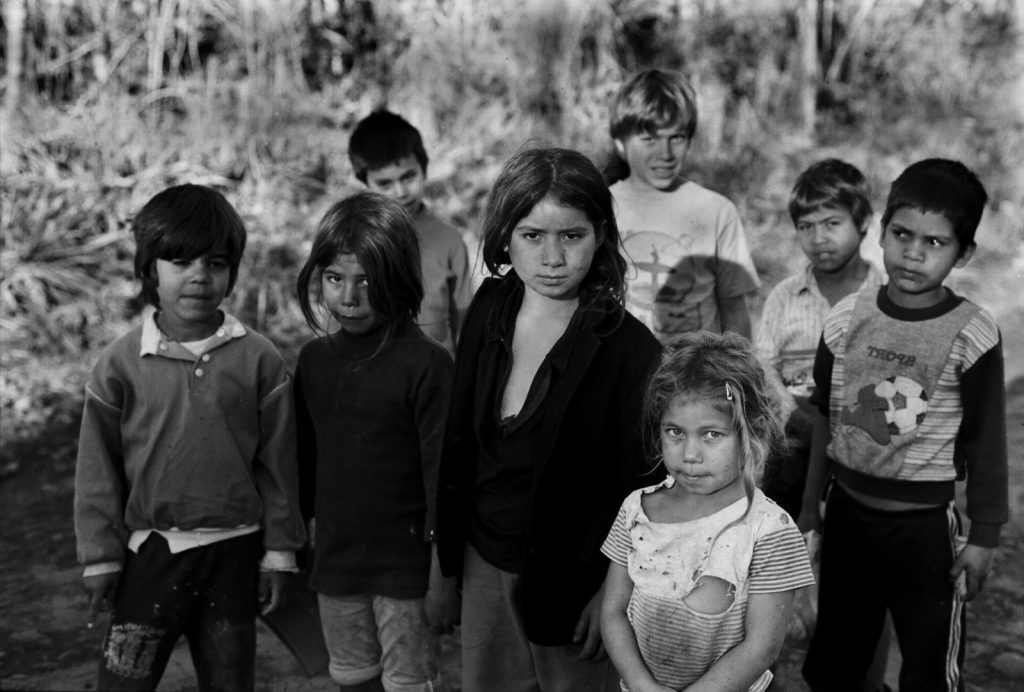
I was tidying up in my garage, and I came across a box I hadn’t touched for fifteen years. Inside it, copies on 30x40cm photographic paper, the surprise was greater when I saw that they were perfect, without marks and the colour as I remembered. Photographs on paper have an unbeatable magic, touching the photograph, feeling the texture of the paper. At that time, I was using Kodak Professional, and the extra expense is really justified by seeing the perfect condition of the copies.
I kept looking at the contents of the box, and I found a series of very sad photos, from a time in my country that I thought would not return. All that series was made with the desire not to see those photos represented in reality anymore. I am a dentist, and for many years I taught postgraduate courses throughout my country. In my spare time after classes or demonstrations, I would hang my camera and go for a walk. First with the aim of photographing the landscapes and cities to which I travelled, but when I met with boys working, being a father recently, I began to listen to them, know how they live and take a photo of them. But the way of photographing them was not pure documentary, my wish was that they felt good with the photos since something that boys have is that they find the good side to terrible things, and that was what I wanted to show without hiding the terrible reality they were going through.
At that time I could not show them the photos right at the moment, since they had to be developed and copied. So when I returned, I would order extra copies and the following month, I would look for them to give them the photos. I’m not going to forget their faces when seeing themselves on paper, feeling like protagonists. Every time I travelled, the enthusiasm to photograph was greater on both sides of the camera. The most beautiful thing is that they looked for me to pose, they invited friends and sometimes they shared the photos with their pets. This series was exhibited several times, and one of the photos is in the book of the law against child labour in Argentina.
Some time ago, I wrote an article reflecting for whom we take photographs, making an analysis from the outside on how we are shaping our vision in relation to acceptance. When I uploaded some photos of this series to the networks, I noticed that there was not much repercussion.
Sometimes I think about what life those boys are leading. Unfortunately, my country is no better than at that time, and it is hard for me to imagine how they would be now. My idea with this series is to invite whoever sees it to open their eyes and see another reality.
The camera to take the photographs was a Nikon FM2 with two lenses, a 50mm f1.8 and a 35mm f2.8, all completely manual, without batteries or motors, only a small battery for the photometer. The shutter is mechanical up to 1/4000, and although it is a lot, in the afternoon with full sun to achieve background blur and work with the diaphragm at the maximum aperture, an ND filter or a polarizer was necessary. And instead of a UV filter, I used an 85b filter to warm the shots, something now forgotten, since we can adjust the white balance before and after shooting with digital cameras. The film I used was Kodak Portra 400, ideal for portraits and a film faithful to the tones of nature. What I do recognize is that the cameras of that time were indestructible, I dropped it countless times, it still works perfectly.
As a final reflection, how important it was to learn photography in an analogue way since each shot had to go well. Focus, photometry and framing. We only had 36 exposures per roll, and it was really expensive, so pressing the shutter was done after checking everything. I remember that I used a handheld photometer for a long time, outside the camera, and to ensure the correct exposure I took the incident light in the shot, placing the dome of the photometer in the place of the subject pointing at the camera. Added to the talks with the boys, each photo had a lot of time invested, something that is currently strange and infrequent.
Spanish:
Me encontraba haciendo orden en mi garage, me topé con una caja que hace quince años no tocaba, dentro de ella copias en papel fotográfico de 30x40cm, la sorpresa fué mayor al ver que estaban perfectas, sin marcas y el color como lo recordaba. La fotografía en papel tiene una magia inigualable, tocar la fotografía, sentir la textura del papel. En esa época usaba Kodak professional, el gasto extra realmente se justifica viendo el estado perfecto de las copias.
Seguí mirando el contenido de la caja y me encontré con una serie de fotos muy tristes, de una época de mi país que pensé que no volvería, toda esa serie fue realizada con el deseo de no ver más esas fotos representadas en la realidad. Soy odontólogo y muchos años dicté cursos de posgrado por todo mi país, en los ratos libres después de las clases o demostraciones, me colgaba la cámara y salía a caminar, primero con el objetivo de fotografiar los paisajes y las ciudades a las que viajaba, pero al encontrarme con chicos trabajando, siendo padre hace poco, comencé a escucharlos, conocer como viven y tomarles una foto. Pero la forma de fotografiarlos no fué documental pura, mi deseo era que se sientan bien con las fotos, ya que algo que tienen los chicos es que le encuentran el lado bueno a las cosas terribles, y eso era lo que quería mostrar sin ocultar la terrible realidad por la que pasaban.
En esa época no les podía mostrar las fotos en el momento ya que había que revelar y copiar, así que al regresar ordenaba copias extra y al mes siguiente los buscaba para regalarle las fotos, no me voy a olvidar más las caras al verse en el papel, sentirse protagonistas. Cada vez que viajaba el entusiasmo para fotografíar era mayor de ambos lados de la cámara, lo más mas lindo es que me buscaban para posar, convocaban a amigos y a veces compartían las fotos con sus mascotas. Esta serie fué expuesta varias veces y una de las fotos está en el libro de la ley contra el trabajo infantil en Argentina.
Hace tiempo escribí un artículo reflexionando para quien tomábamos fotografías, haciendo un análisis desde afuera sobre como vamos modelando nuestra visión en relación a la aceptación. Cuando subí algunas fotos de esta série a las redes, noté que no hubo mucha repercusión.
A veces pienso que vida estarán llevando esos chicos, lamentablemente mi país no está mejor que en esa época, y me cuesta imaginar cómo estarían ahora. Mi idea con esta serie es invitar a quien la vea a abrir los ojos y ver otra realidad. La cámara para realizar las fotografías fué una Nikon FM2 con dos lentes, un 50mm f1.8 y un 35mm f2.8, todo completamente manual, sin baterías ni motores, solamente una pequeña pila para el fotómetro. El obturador es mecánico hasta 1/4000, es mucho pero a la tarde con pleno sol para poder lograr desenfoque y trabajar con el diafragma a la máxima apertura, era necesario un filtro ND o un polarizador. Y en lugar de un filtro UV usaba un filtro 85b para dar calidez a las tomas, algo ahora olvidado ya que con las cámaras digitales podemos regular el balance de blancos pre y post toma. La película que usé fue Portra 400, ideal para retratos y una película fiel a los tonos de la naturaleza. Lo que sí reconozco que las cámaras de esa época eran indestructibles, se me cayó infinidad de veces, todavía funciona perfectamente.
Como reflexión final, que importante fué aprender fotografía de forma analógica, ya que cada toma tenía que salir bien, foco fotometría y encuadre. Solo contábamos con 36 exposiciones por rollo fotográfico y era realmente caro, por lo que apretar el obturador se realizaba una vez comprobado todo. Recuerdo que usé mucho tiempo un fotómetro manual, fuera de la cámara y para asegurarme la exposición correcta tomaba la luz incidente en la toma, colocando el domo del fotómetro en el sitio del sujeto apuntando a la cámara. Sumado las charlas con los chicos, cada foto tenía mucho tiempo invertido, algo que actualmente resulta extraño e infrecuente.
Text and Photos by Marcelo C. Esperón
